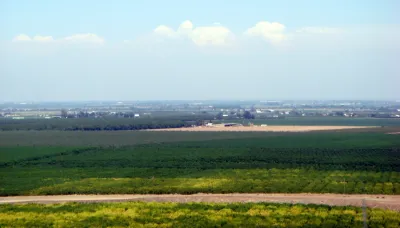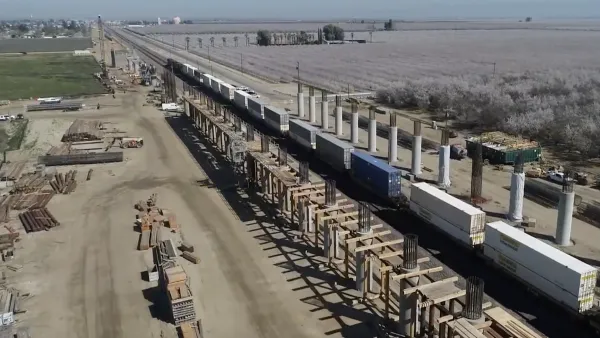Delays in acquiring properties are costing the project significant amounts of time and money.

Ralph Vartabedian reports on the status of the California High-Speed Rail Authority’s acquisition of land in the Central Valley. “The slow progress in many cases has pushed back construction timetables for the Los Angeles-to-San Francisco system, caused delay claims by contractors and hardened the emotions of some property owners.”
The project is already 13 years behind schedule, and the budget overrun is at $44 billion. In the Central Valley alone, the initial cost estimate of $332 million to acquire properties has skyrocketed to $1.5 billion. “There are fights about farm wells and trellises. Debates about the value of nut trees apart from the land where they grow. And tears shed over the loss of land held by families for more than a century,” says Vartabedian.
The authority still needs to acquire 160 of 378 parcels in Kings County. The area has complex agricultural systems, and resistance from farmers has been intense. “When a track cuts a vineyard diagonally, for instance, the trellis structure and the grape vines must be either removed or restrung. That can curtail production for years and the state has to pay for it, farmers say,” reports Vartabedian.
Adding to the slow progress is the fact that one judge from Southern California is hearing the disputes, since all of the county’s superior court judges have recused themselves, and Caltrans lawyers representing the authority are scattered throughout the state.
“The rail authority has acknowledged that it made serious errors in the Central Valley, issuing construction contracts before land was in hand and underestimating the difficulty of the process. It has vowed to not repeat those errors. But fixing what is already broken has become a long process,” notes Vartabedian.
FULL STORY: Bullet-train land acquisitions are moving so slowly a judge hearing the cases calls it a ‘lifetime job’

National Parks Layoffs Will Cause Communities to Lose Billions
Thousands of essential park workers were laid off this week, just before the busy spring break season.

Retro-silient?: America’s First “Eco-burb,” The Woodlands Turns 50
A master-planned community north of Houston offers lessons on green infrastructure and resilient design, but falls short of its founder’s lofty affordability and walkability goals.

Delivering for America Plan Will Downgrade Mail Service in at Least 49.5 Percent of Zip Codes
Republican and Democrat lawmakers criticize the plan for its disproportionate negative impact on rural communities.

Test News Post 1
This is a summary

Test News Headline 46
Test for the image on the front page.

Balancing Bombs and Butterflies: How the National Guard Protects a Rare Species
The National Guard at Fort Indiantown Gap uses GIS technology and land management strategies to balance military training with conservation efforts, ensuring the survival of the rare eastern regal fritillary butterfly.
Urban Design for Planners 1: Software Tools
This six-course series explores essential urban design concepts using open source software and equips planners with the tools they need to participate fully in the urban design process.
Planning for Universal Design
Learn the tools for implementing Universal Design in planning regulations.
EMC Planning Group, Inc.
Planetizen
Planetizen
Mpact (formerly Rail~Volution)
Great Falls Development Authority, Inc.
HUDs Office of Policy Development and Research
NYU Wagner Graduate School of Public Service





























